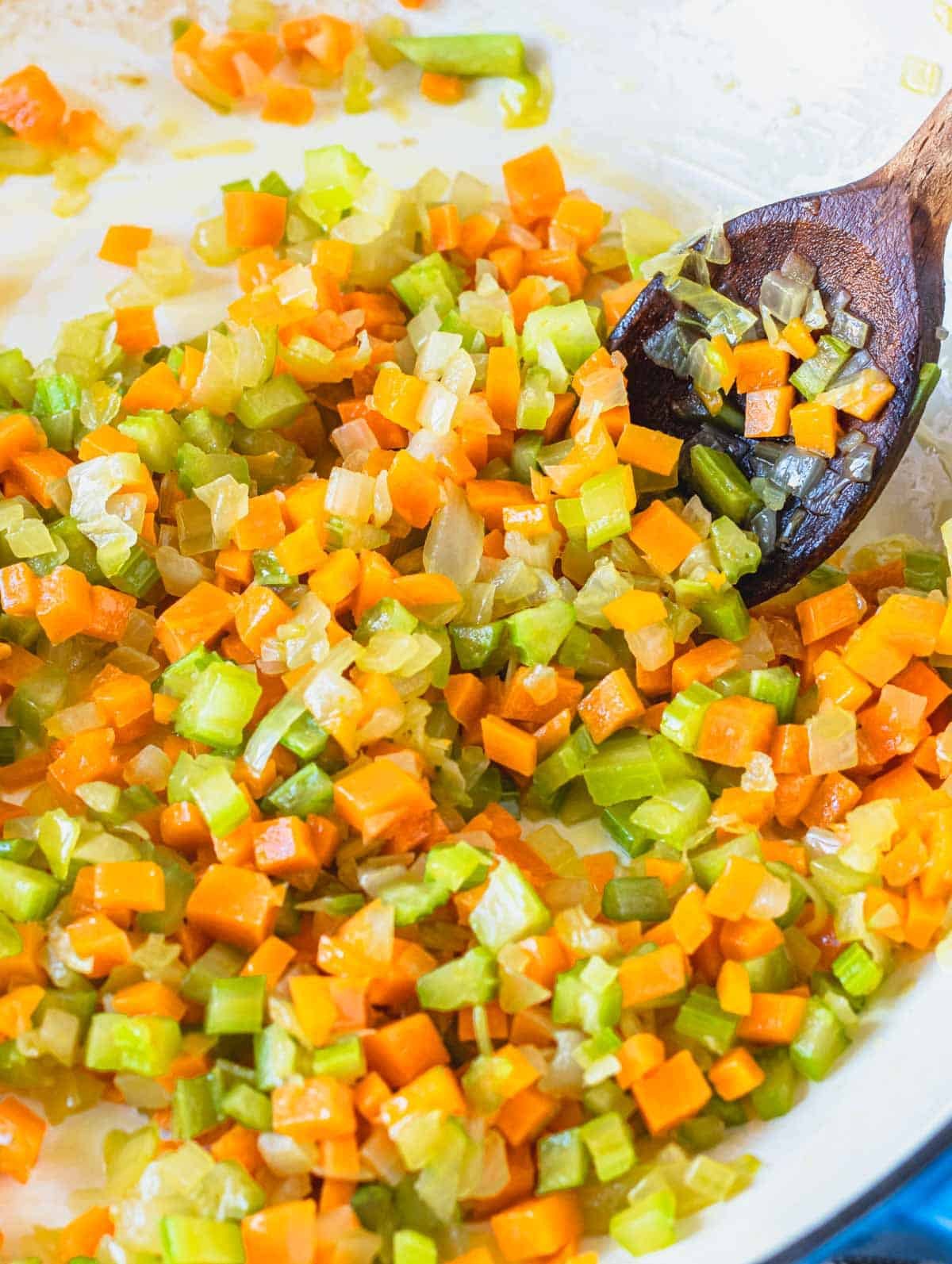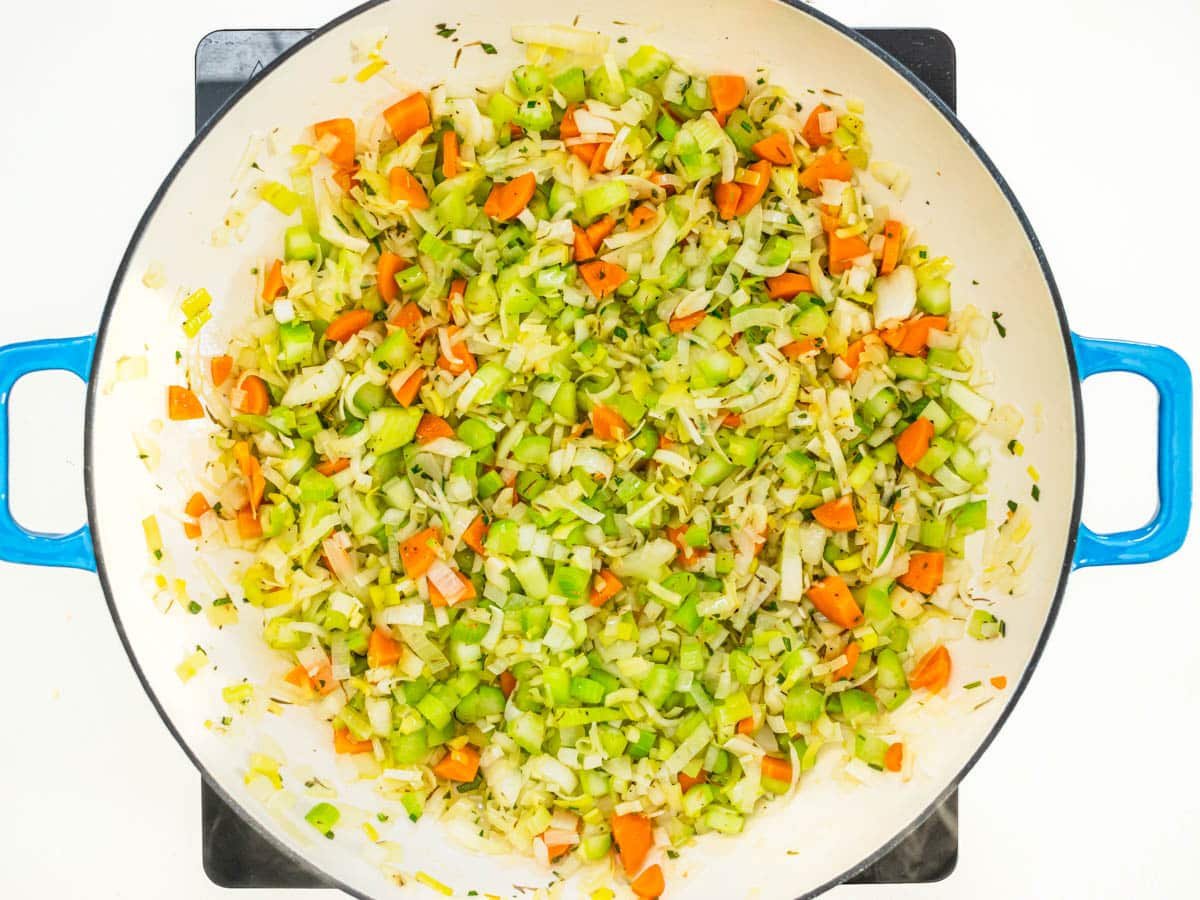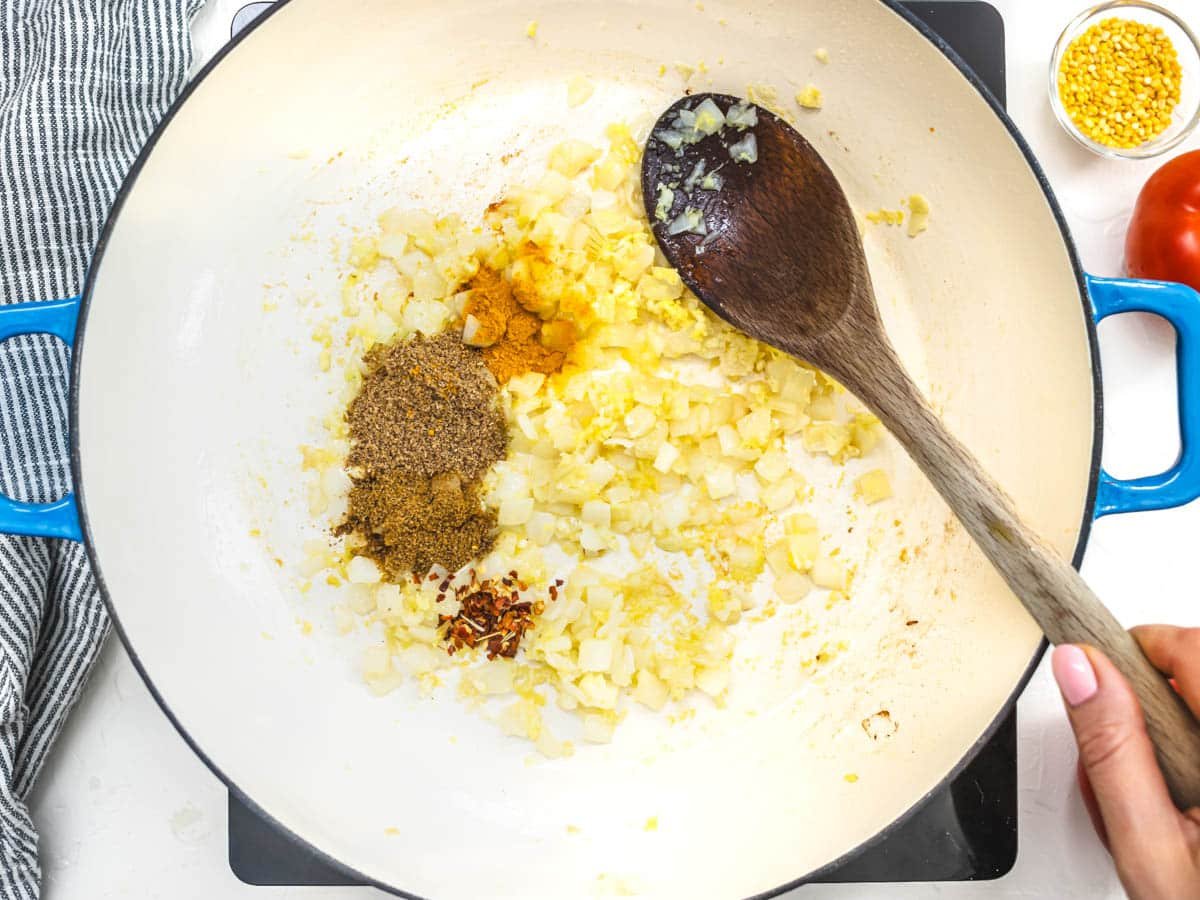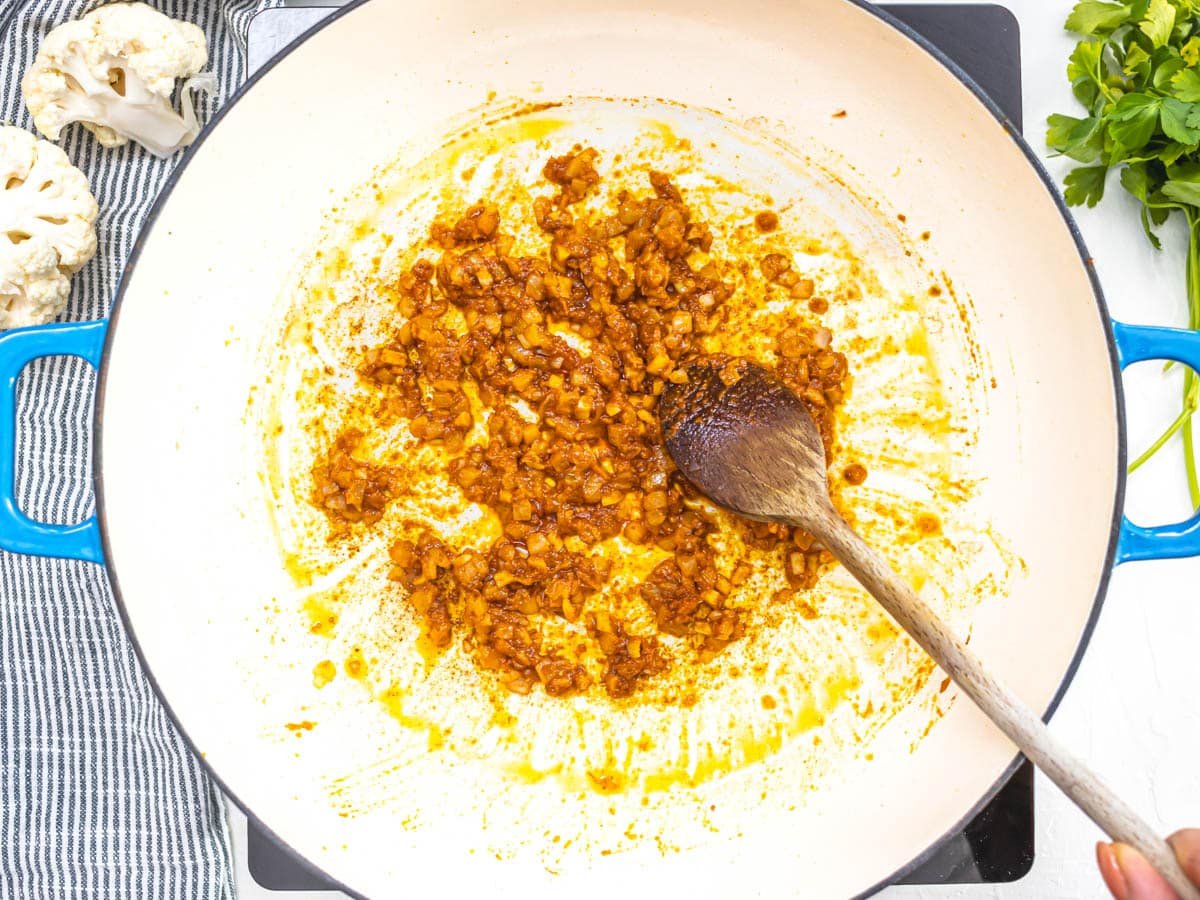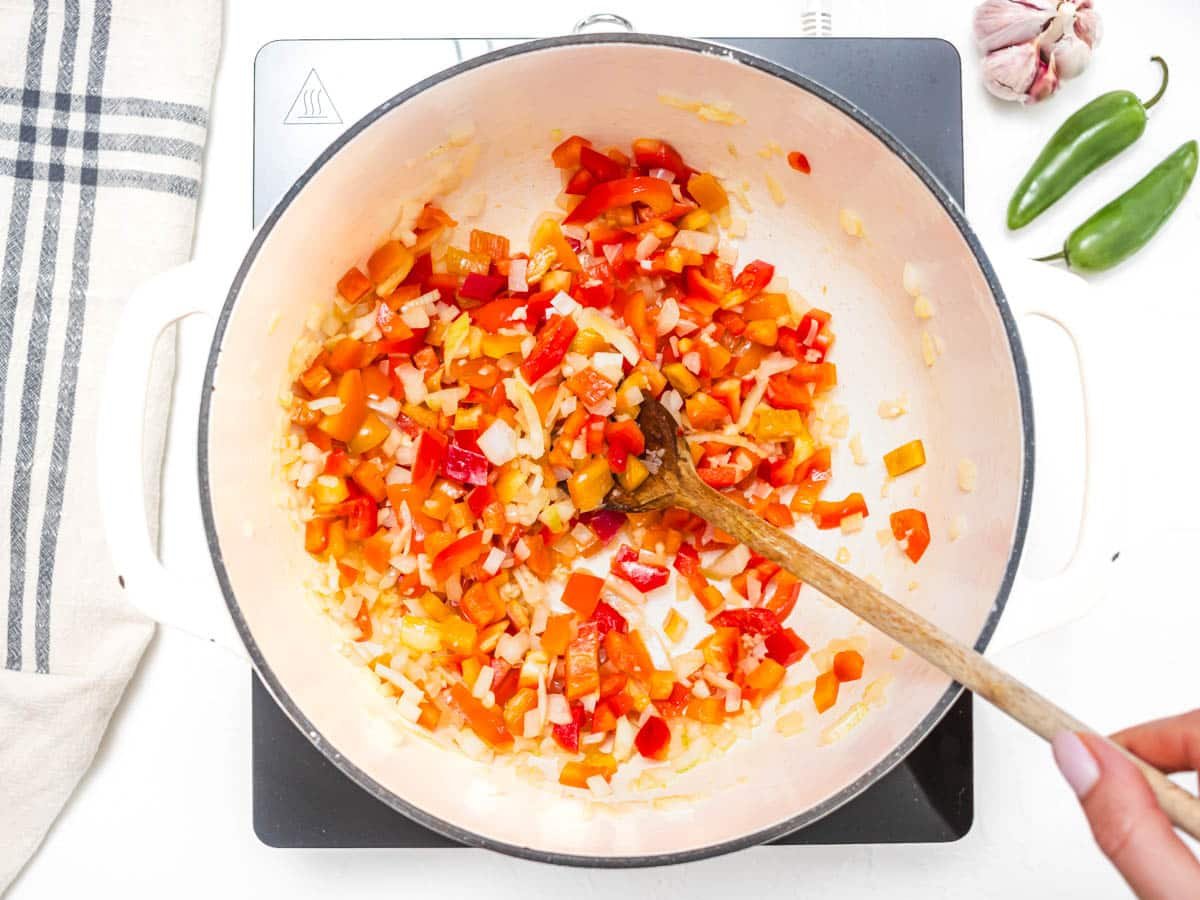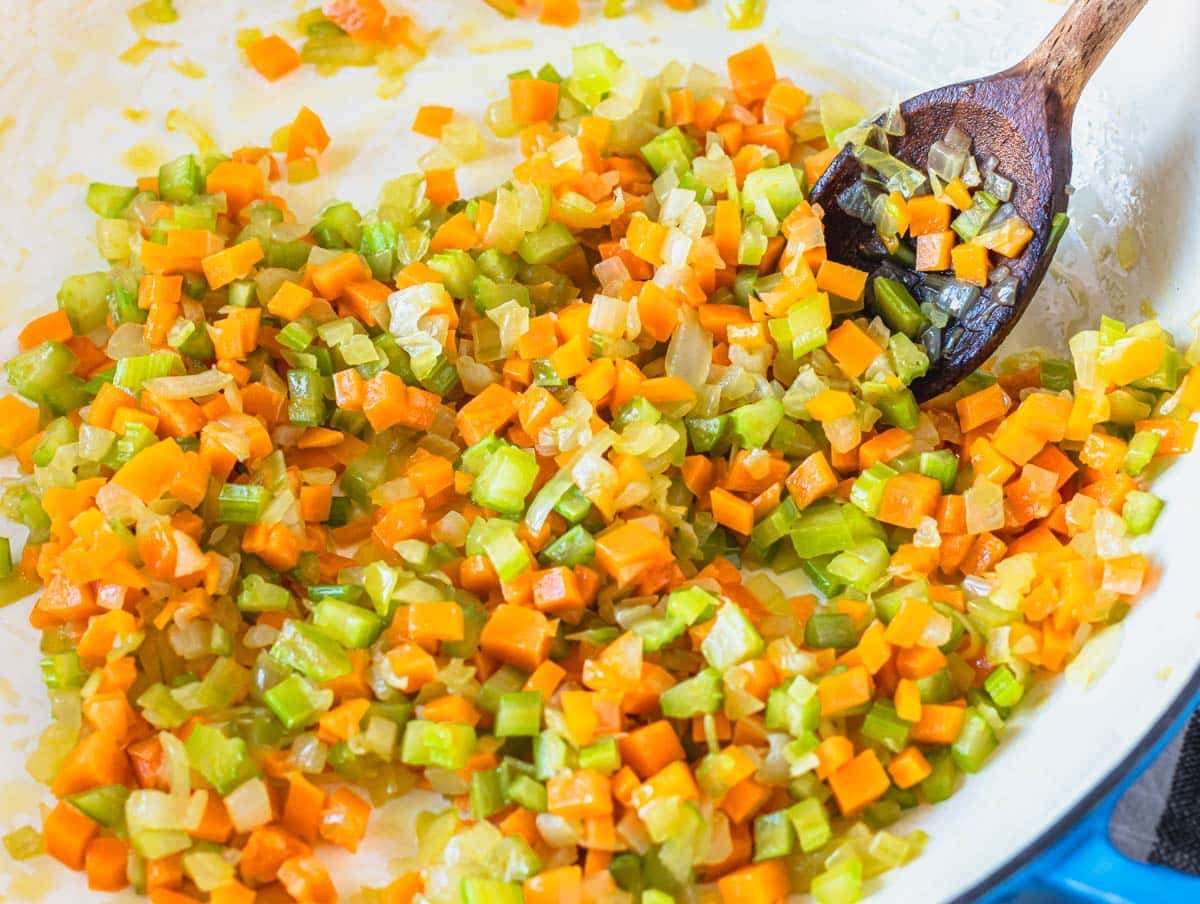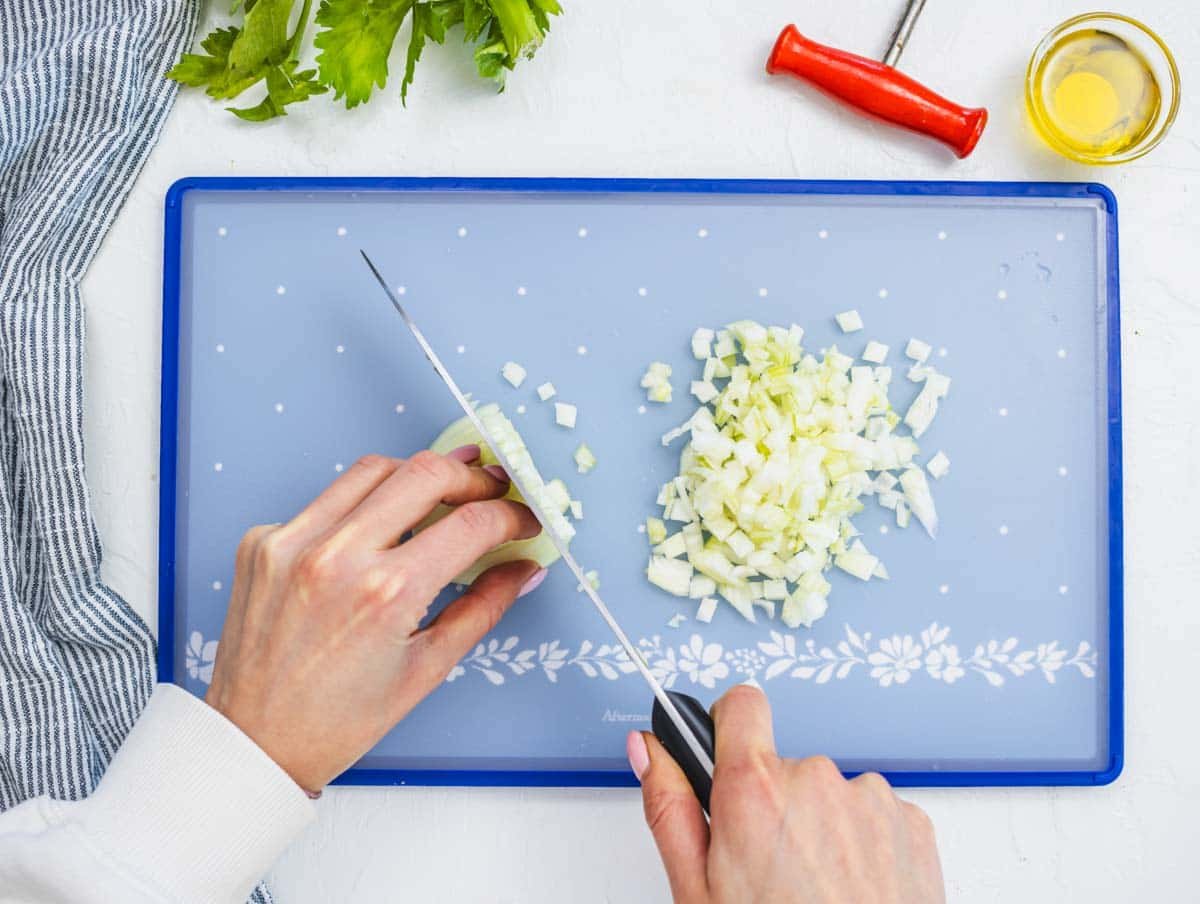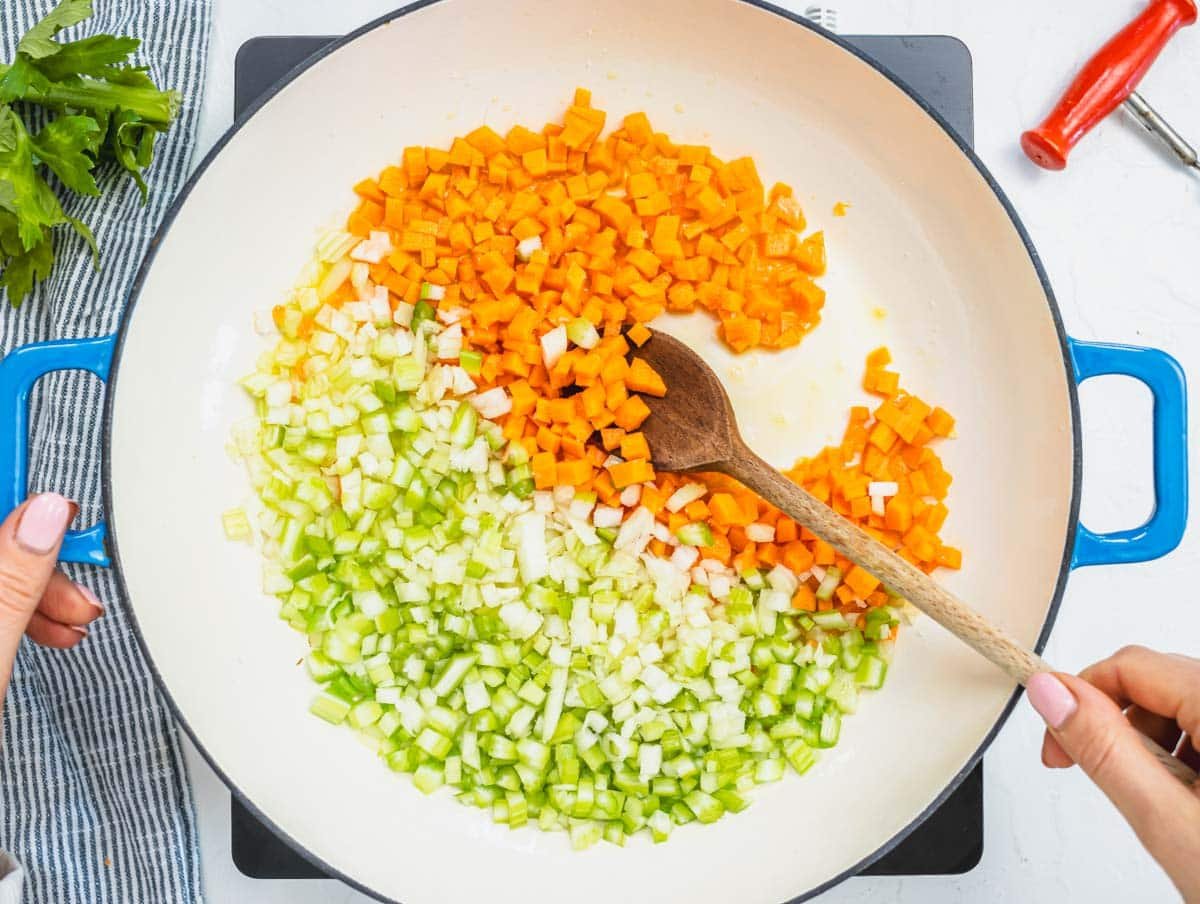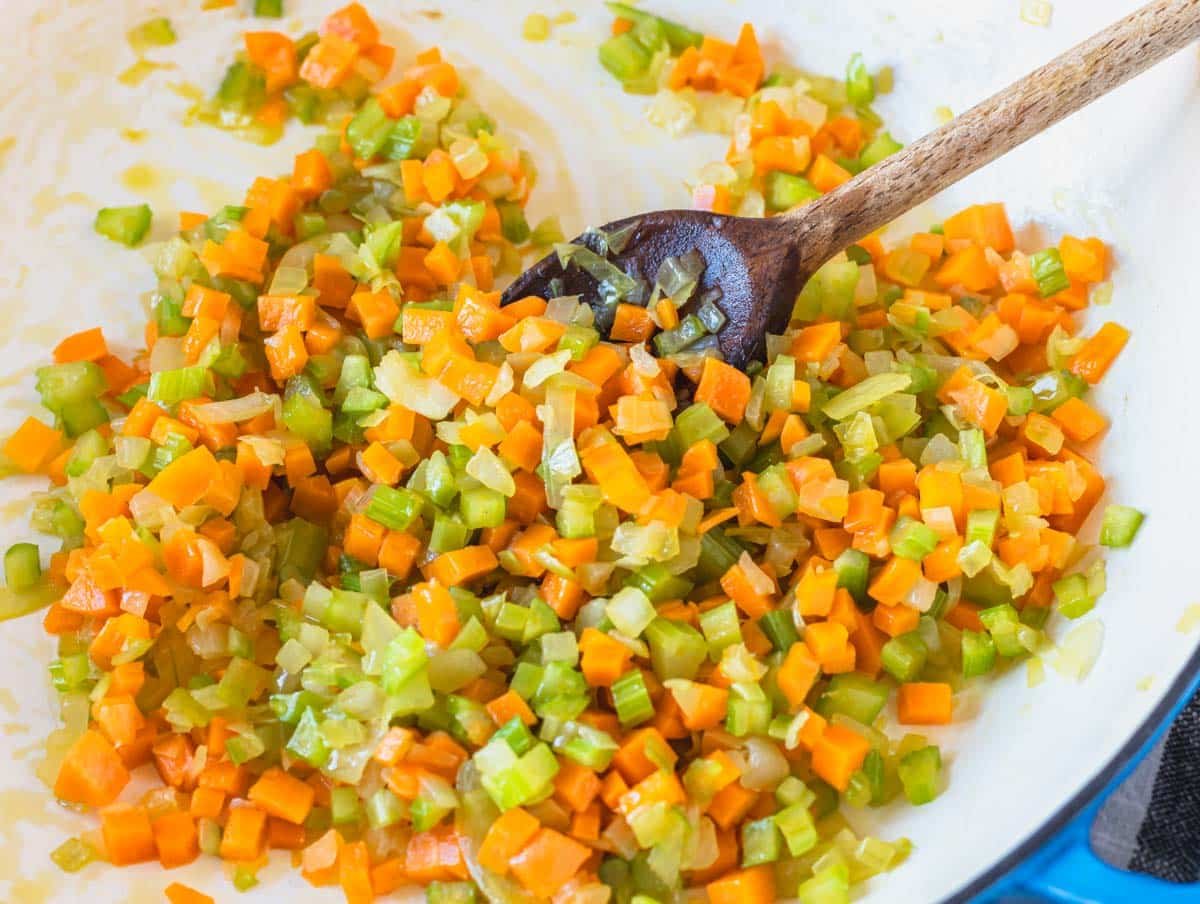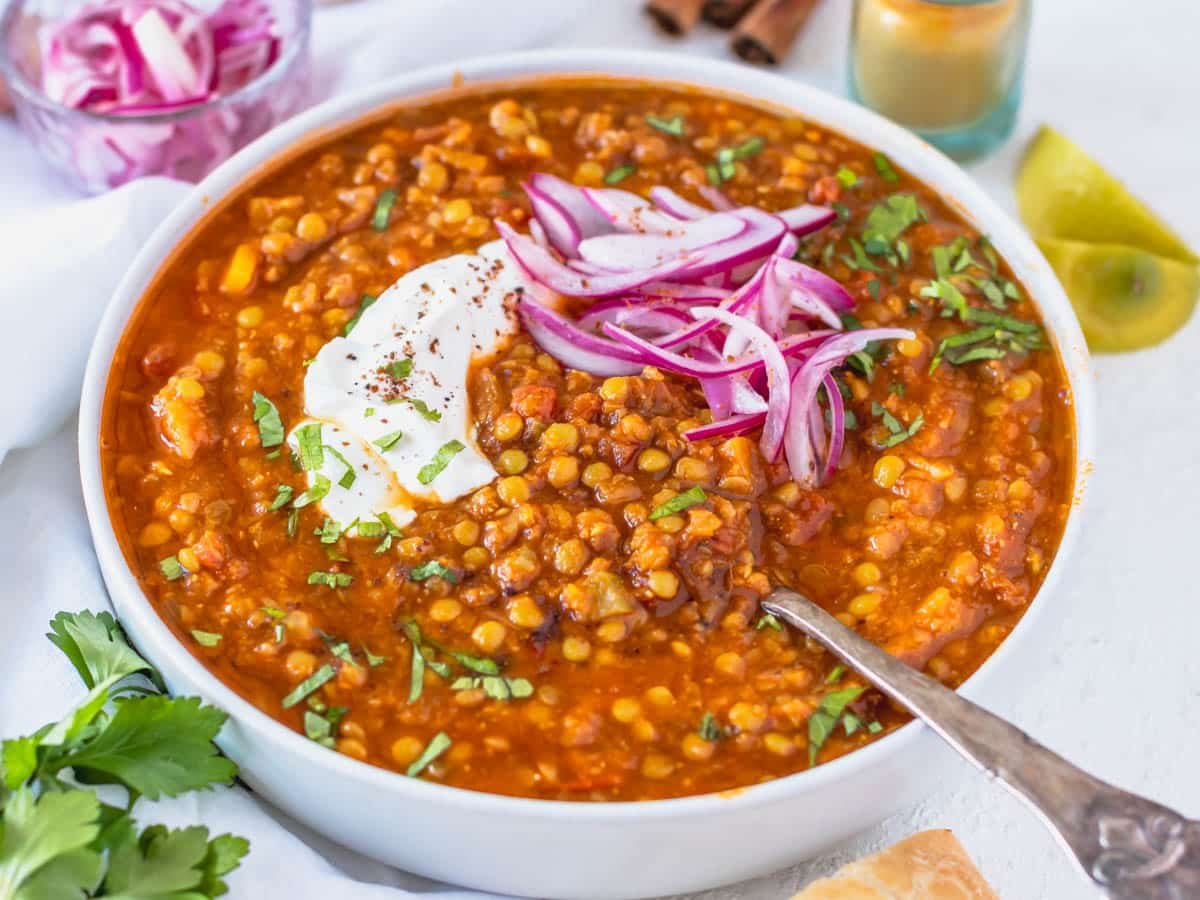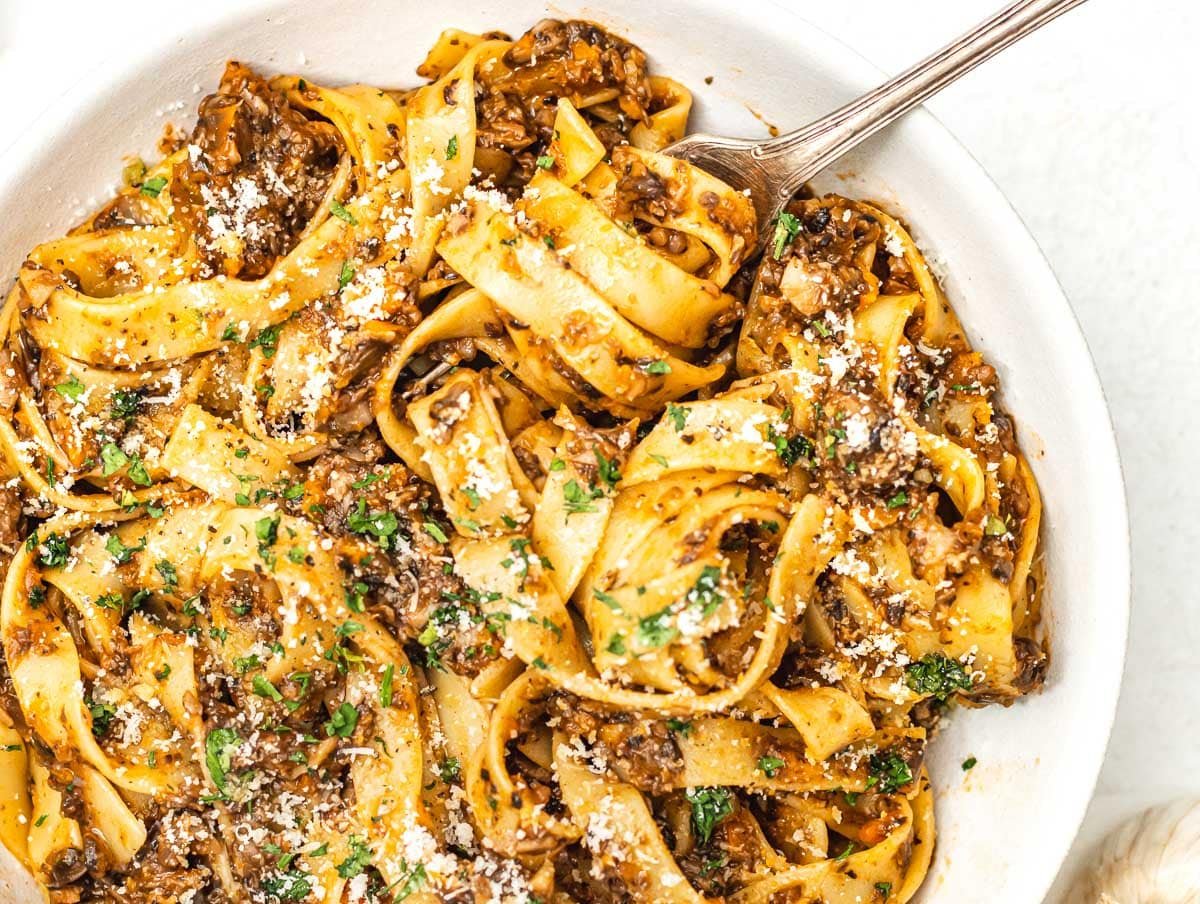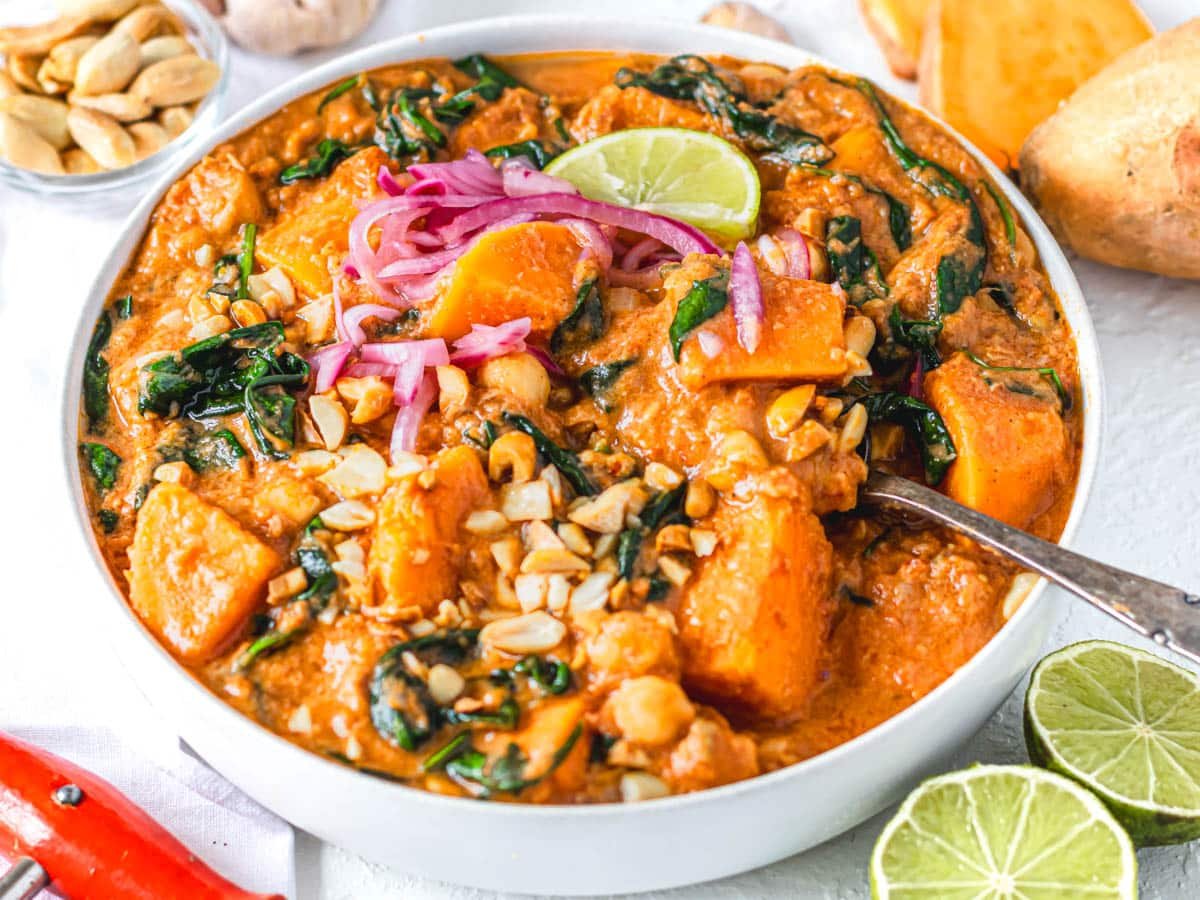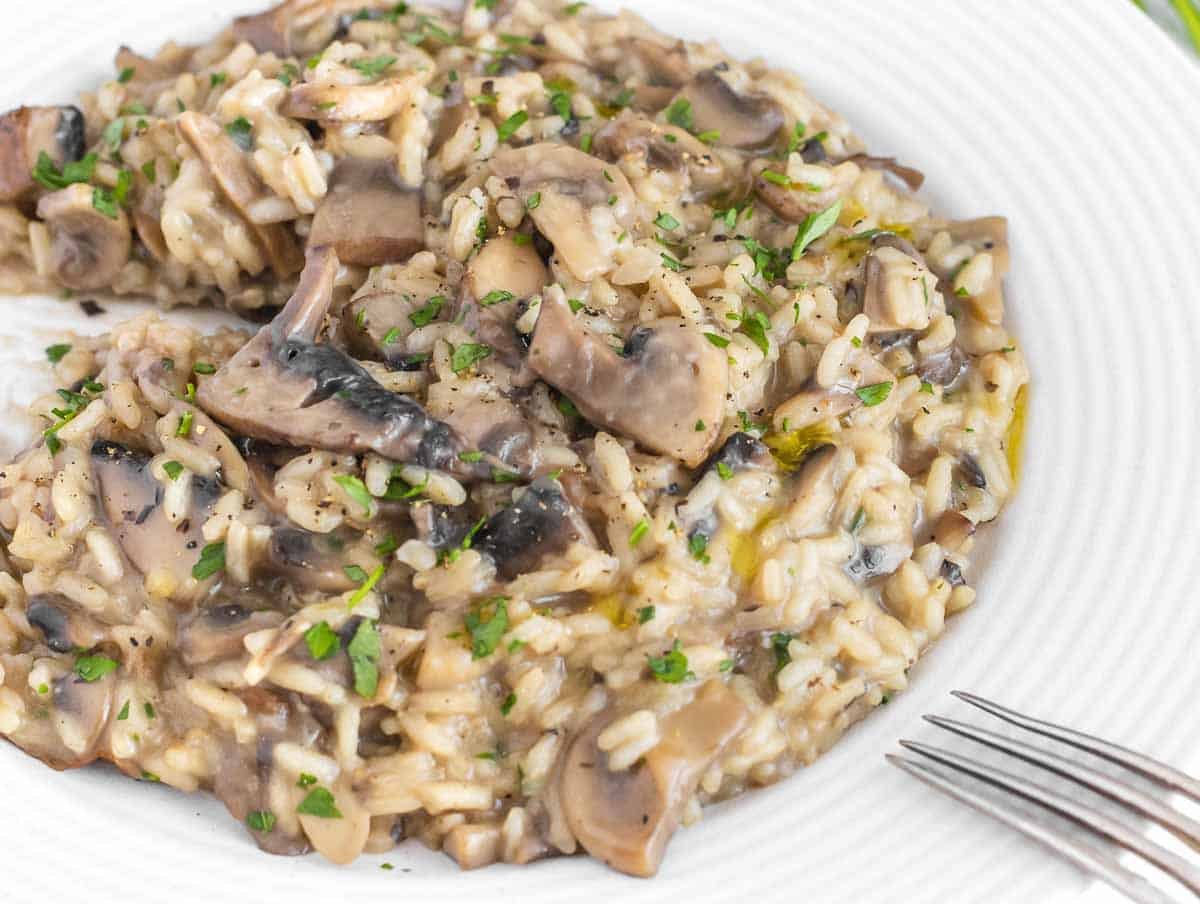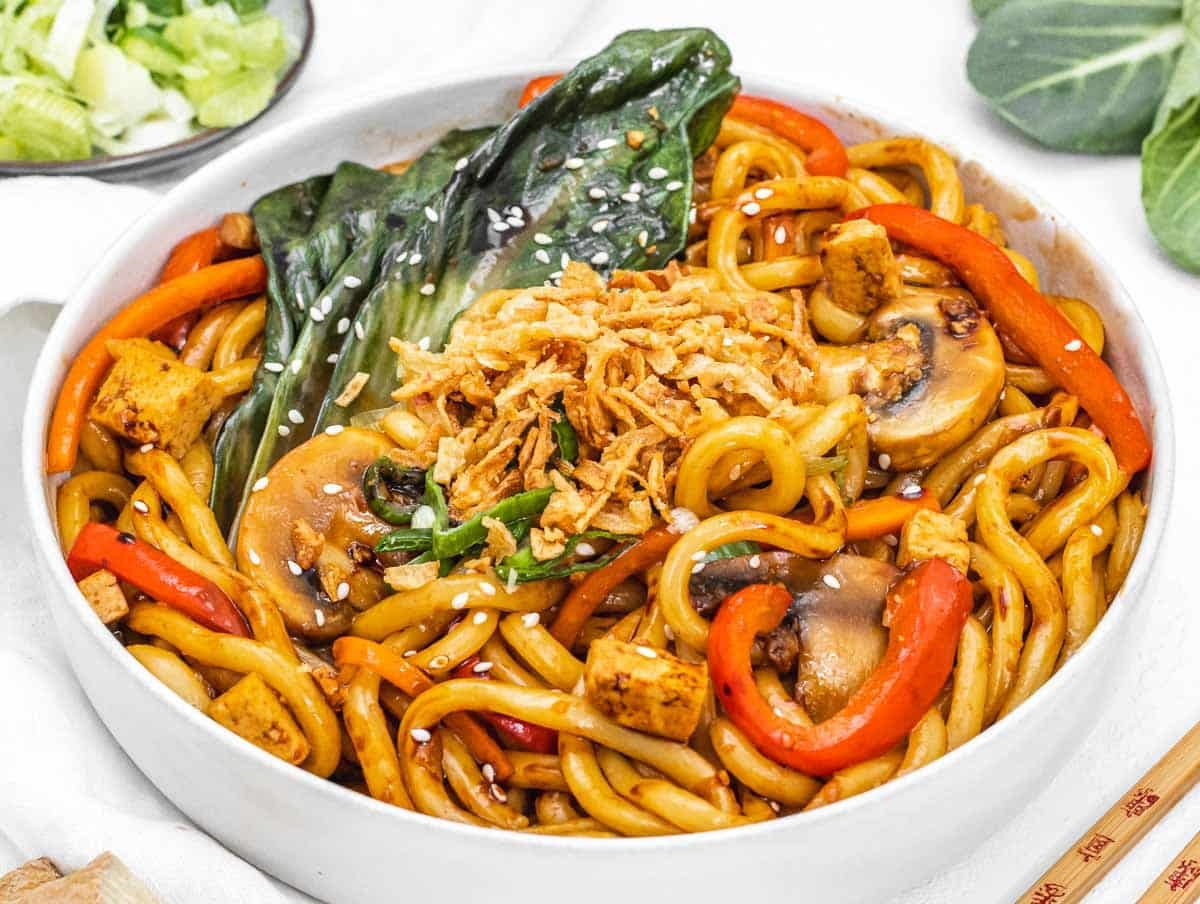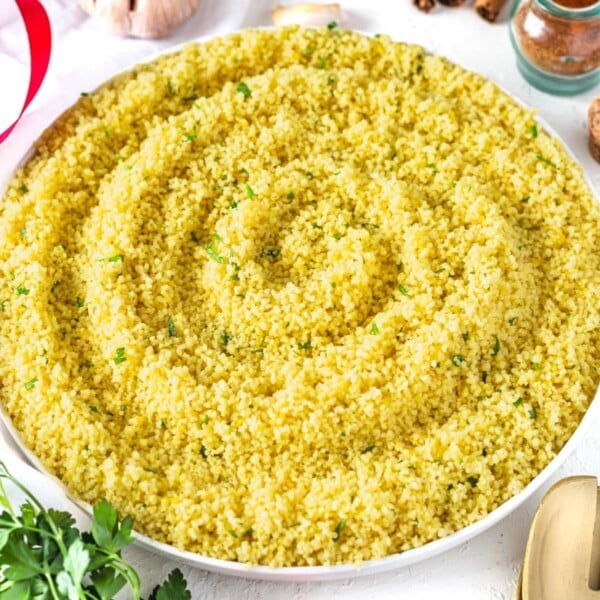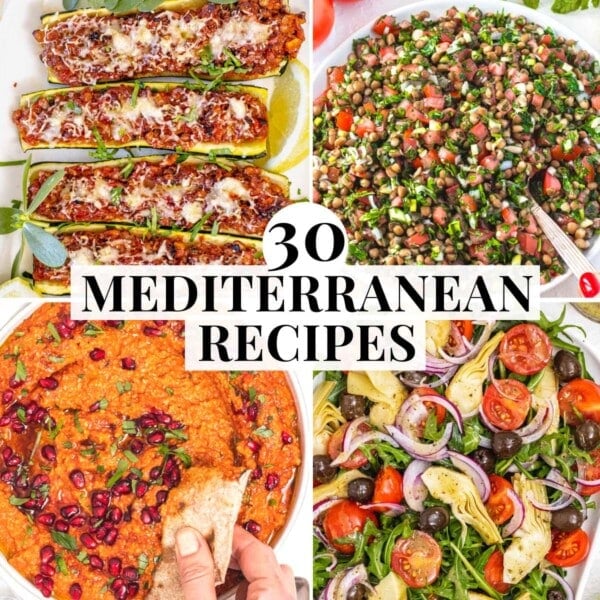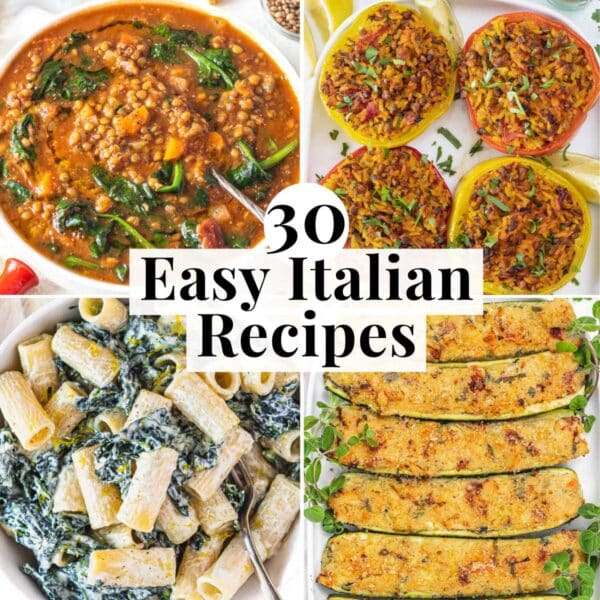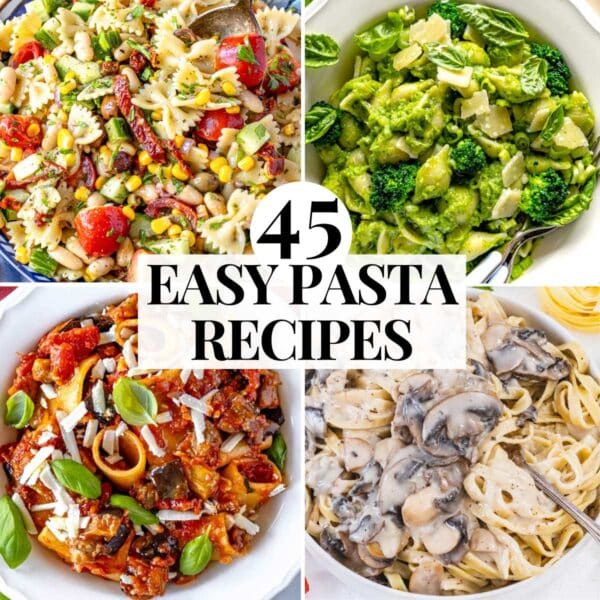You can make Italian soffritto by gently cooking chopped onion, celery, carrot, and sometimes garlic in extra virgin olive oil to allow the veggies to release their flavors slowly. Dietary Note: this recipe is suitable for a vegetarian, vegan, and gluten-free diet.Don’t have time to read the full blog post? JUMP TO RECIPE HERE!
What is Italian Soffritto?
Ingredients & Substitutions for Soffritto
How to Make Soffritto
Recipes with Soffritto
Storage & Make Ahead
More cooking basics
Knowing how to make an excellent Italian soffritto is a game changer in your kitchen because it’s the most effective way to add depth of flavor to a dish from the ground up with simple pantry staples. In Italian cuisine, soffritto is made by gently cooking one or two parts onion, one part celery, and one part carrot in extra virgin olive oil. The vegetables should be finely chopped with a sharp knife or a mezzaluna. They should cook slowly, without browning or caramelizing, until they become soft and translucent and release their sweet flavor.
Can you add other vegetables?
Depending on the dish, you can add leek, tomato paste, shallots, garlic, bell peppers, tomatoes, ginger, or sturdy herbs like sage, rosemary, and bay leaves. If you add basil or parsley, like in spaghetti aglio olio, do so at the end, never at the start, as they are delicate herbs and will lose their flavor if they cook for too long. Or you can omit some ingredients and make soffritto with onion, garlic, and chili, like in a classic marinara sauce, or with just garlic and chili, like in arrabbiata sauce. You’ll love soffritto because you can use it in most recipes once you get the hang of it. Think of Italian dishes like lentil soup and lentil bolognese or Tuscan white bean soup, pasta e fagioli, and red lentil soup. You can use it to level up your holiday meals in a flavorful vegetarian stuffing and festive Mushroom Wellington or as a flavor base for lentil loaf and stuffed butternut squash.
Soffritto around the world
But soffritto, as in the technique of building flavor from the ground up, goes way beyond Mediterranean cooking. It’s an established technique in all of the best world cuisines. In Indian cooking, for instance, most dishes start with a flavor base of onion, ginger, and garlic cooked in oil or ghee. Spices like cumin seeds and coriander are often added for aroma. You can see this in practice in our lentil curry, chickpea curry, chana masala, and vegan tikka masala. In North African cooking, they do the same. Harira soup and Moroccan lentil soup start with a soffritto of onion, celery, and garlic. In Moroccan chickpea stew, spicy harissa is added to the mix, and in African peanut stew, ginger, and cumin make up the flavor base, along with onion and garlic. On the other side of the ocean, in Creole and Cajun cooking, and down to central and South American cuisine, sofrito with celery, onion, and bell pepper is so important that it is often referred to as the holy trinity. You can try this in our lentil chili and sweet potato chili, also adding garlic and cumin. It’s a beautiful combination of flavors. And to the east, the Chinese make a delicious flavor base with scallion, ginger, and garlic. Try this in our tofu stir fry, braised tofu, and kung pao tofu. But now that you have learned how important this simple cooking technique is, let’s see how to put this into practice with our step-by-step guide.
Extra virgin olive oil
Our rule of thumb when cooking with oil is to use the best oil you can afford. In most cases, this is a good quality extra virgin olive oil. Extra virgin olive oil is the best choice for Italian soffritto because its high polyphenol content keeps it stable at high temperatures. As a result, extra virgin olive oil won’t burn and won’t produce toxic compounds that other oils produce despite their higher smoke point. Substitute virgin olive oil, regular olive oil, or avocado oil for extra virgin olive oil. In Indian cooking, you can use mustard oil or a neutral vegetable oil if you prefer, but olive oil works perfectly well, too. Butter, lard, guanciale, pancetta, prosciutto, or ghee is sometimes used instead of oil.
Onion
You can use white onion, yellow onion, or red onion. Substitute shallot, leek, green onions, and scallions for onion. In some cases, like our Tuscan soup, you might use both onion and leek.
Carrot
Carrots are a vital ingredient in Italian soffritto and French mirepoix. Depending on the cuisine and recipe, you can substitute bell peppers for carrots.
Celery
Another key ingredient, celery, is almost always used in Mediterranean-style soffritto. Substitute celery root for celery.
Garlic (optional)
Garlic is optional, depending on the recipe. In some cuisines, like Indian and Asian, garlic is often paired with ginger.
Salt
A pinch of sea salt helps soften the vegetables and brings out their flavor. Tip: try to chop the vegetables into small dice of similar size. Alternatively, pulse them together in a food processor until finely chopped. Don’t overprocess them, though, or they’ll become a mash. Remember that hand-chopped vegetables will have a better texture than processed vegetables.
1. Chop the vegetables
Rinse, peel, and chop the carrot into sticks with a sharp knife, then cut it into small dice. Rinse and chop the celery into sticks, then cut it into small dice. Peel the onion, cut it in half, and then finely chop it into small dice.
2. Cook the vegetables
Heat the extra virgin olive oil in a large pan, skillet, or pot, then add the chopped vegetables and a pinch of salt. Cook gently on medium to medium-low heat for 5 to 20 minutes, depending on how much time you have. Stir often with a wooden spoon. The longer the vegetables cook, the more flavor they release. The vegetables should not brown or caramelize. They should slowly become tender and translucent, releasing their sweetness.
Soffritto for sauces
Marinara Sauce Mushroom Bolognese Lentil Bolognese Puttanesca Sauce
Soffritto for stews
Spinach stew Chickpea stew African peanut stew Moroccan chickpea stew
Soffritto for risotto
Tomato risotto Asparagus risotto Mushroom risotto Vegan risotto Butternut squash risotto
Soffritto for curries
Cauliflower curry Sweet potato curry Chickpea curry Vegan curry Potato curry
For more Indian-inspired ideas, check out our best Indian vegetarian recipes.
Soffritto for Asian food
Yaki Udon Tofu Stir Fry Braised Tofu Kung Pao Tofu
Soffritto for Holiday Meals
Mushroom Wellington Lentil loaf Stuffed butternut squash Vegetarian stuffing
Refrigerator: It keeps in an airtight container in the fridge for up to 3 days. Freezer: Let the soffritto cool down completely, then portion it before freezing. You can freeze it in an ice cube tray or freezer-friendly baby food containers. It keeps for 3 months.
How to Cook Chickpeas
How to Cook Black Lentils
How to cook couscous
How to Cook Red Lentils
Mediterranean Diet Recipes
30 Easy Italian Recipes
45 Easy Pasta Recipes
45 Easy Vegetarian Dinner Recipes
